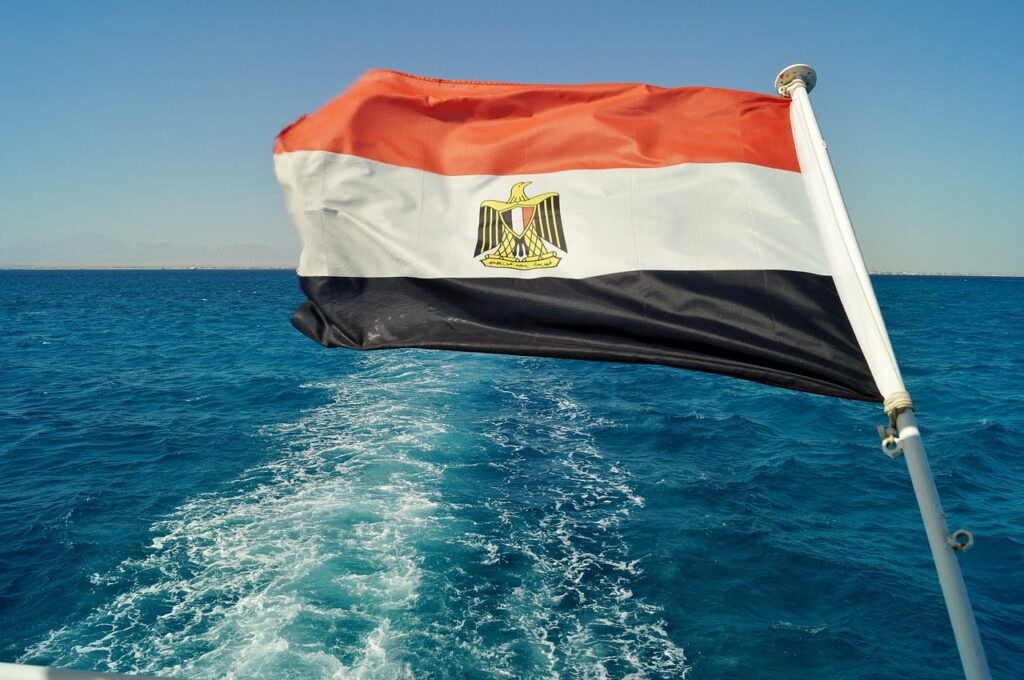A €7 billion investment to produce one million tons of green ammonia annually might be a turning point for Egypt’s renewable energy trajectory. Yet beneath the optimism surrounding the Egypt-France deal signed during French President Emmanuel Macron’s recent visit to Cairo, critical questions remain about timelines, infrastructure readiness, and export market competitiveness.
The agreement—inked by the Red Sea Ports Authority, Egypt’s New and Renewable Energy Authority (NREA), and the Green Fuel Alliance (a joint venture between EDF Renewables and Zero Waste)—marks one of the largest green hydrogen announcements in North Africa to date. The project, centered in Ras Shukheir, aims to deliver 300,000 tons of green ammonia by 2029 in its first phase, scaling to one million tons annually across three phases.
Export Targets in a Shifting Market
While the project is framed as a clean shipping fuel supply initiative, its ultimate value hinges on export opportunities. European demand for green hydrogen derivatives, including ammonia, remains constrained by policy uncertainty and limited infrastructure for handling green molecules at scale. According to the European Hydrogen Backbone report, just 10–15% of the EU’s hydrogen demand by 2030 is expected to be met through imports—raising concerns over Egypt’s ability to secure long-term offtake agreements in such a volatile landscape.
Moreover, the global green ammonia trade infrastructure is in its infancy. A 2024 study from DNV points out that less than 5% of global ports are currently equipped to handle green ammonia safely or economically. Without binding offtake agreements or clarity on shipping logistics, the Ras Shukheir project may struggle to convert potential into performance.
Privately Financed, But Still Dependent on Public Systems
A standout feature of the deal is its private-sector financing model. With EDF Renewables and Zero Waste committing €2 billion in the first phase alone, the project is pitched as zero-cost to the Egyptian state. Yet while public finances may not be directly tapped, the project is still reliant on state-controlled maritime corridors, land use, and environmental permitting.
Eliminating the need for state-provided electricity transmission is ambitious—but whether the dedicated 7-kilometer transmission corridor and desalination infrastructure can operate independently, at scale, and on time remains to be seen. A 2023 report from IRENA on hydrogen production in arid regions stresses that water availability and desalination costs could be decisive economic factors in such projects. The inclusion of a desalination unit suggests a recognition of this constraint but does not yet address long-term sustainability or energy input costs.
Local Content and Labor Goals: Aspirational or Realistic?
The Egyptian government has underscored workforce localization as a central pillar of the project, with targets set at 95% Egyptian workforce participation. However, similar projects in the region, such as NEOM’s green hydrogen venture in Saudi Arabia, have shown how difficult it is to rapidly scale skilled labor in specialized industries like electrolyzer maintenance or cryogenic ammonia handling.
Training provisions included in the agreement are a necessary step, but the broader ecosystem of technical education, certification, and operational safety standards must evolve rapidly. According to a 2024 World Bank report on green jobs in the MENA region, workforce readiness remains one of the most underfunded and underdeveloped aspects of clean energy development.
Infrastructure Ambitions Face Execution Pressure
The plan includes the development of a 400-meter-long, 17-meter draft loading dock at the Red Sea Ports Authority—critical for large-scale ammonia shipping. Yet the Red Sea’s maritime infrastructure is already under pressure due to security risks and congestion, particularly given the recent uptick in regional shipping diversions around the Suez Canal.
Ensuring the Ras Shukheir terminal’s competitiveness will require not just construction, but integration with global shipping lanes, specialized loading systems, and safety measures aligned with IMO regulations on ammonia handling.
Strategic Positioning Amid Regional Competition
Egypt’s ambitions to become a regional hydrogen hub are not unique. Morocco, Oman, and the UAE are all positioning themselves similarly—each leveraging renewable potential and strategic geography. In this context, the Ras Shukheir project must distinguish itself through execution, reliability, and cost-efficiency.
While the total 368 square kilometers allocated for solar and wind reflect strong resource availability, cost competitiveness will depend on long-term LCOE (Levelized Cost of Energy) and electrolyzer efficiency. IEA projections from 2024 suggest that without significant reductions in CAPEX, green hydrogen projects in the MENA region may struggle to compete with emerging markets in Latin America and Australia, particularly in terms of shipping costs and reliability of renewables.
The Egypt-France green hydrogen complex represents a bold bet on Ras Shukheir’s strategic location and renewable resource potential. Yet the path from memorandum to molecule is fraught with logistical, geopolitical, and commercial challenges. Without detailed public disclosures on offtake agreements, LCOE projections, or electrolyzer sourcing, the real test lies ahead—in execution, not ambition.





